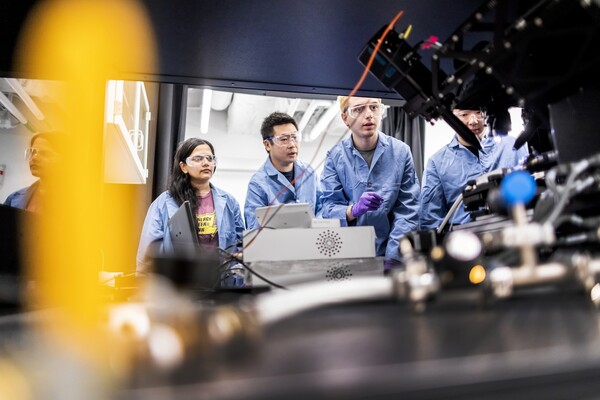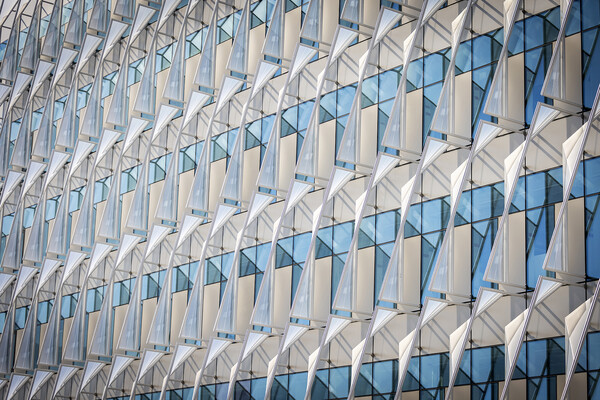
nocred
Q&A/Penn Design’s computer animation expert, and a recent recipient of a Pew Fellowship award, talks about the low-tech rewards of clay and how his students help him keep up with the latest software.
One side of Joshua Mosley’s Powelton Village studio is filled with all the high-tech equipment you’d expect from someone who teaches computer animation. There’s the pair of super-sized flat screen monitors, the digital cameras, the sound equipment, the tangle of wires that let all the electronics talk to one another.
The other side—what Mosley calls the “dirty” side—tells another story. This is where Mosley, an assistant professor of animation and digital media at Penn Design, makes the clay figures and plaster dogs that populate his animated films, as well as the charcoal and ink-wash drawings he uses as backdrops.
Mosley, a graduate of Chicago’s Art Institute, sees nothing odd about this meeting of high tech and hand wrought. The artist, who recently won a coveted Pew Fellowship, uses all the tools in his creative arsenal to tell stories about age-old human concerns—loneliness, longing, the need to connect—in new, unexpected ways.
His most recent film, A Vue, tells of the halting courtship between a park ranger who spends his days taking care of a 150-foot bronze monument to George Washington Carver and a P.R. rep for a fiber optic company. The couple’s inability to forge a personal bond—their talk is all about their passion for their respective jobs—is told through starkly simple images and hauntingly hollow dialogue.
The cartoonish simplicity of the piece belies the labor that went into its creation. For this seven-minute stop-motion film, Mosley shot around 5,800 still images, moving his clay figures by tiny degrees between each frame and setting up different backgrounds to accompany each scene. The work is labor intensive. But Mosley says that’s just the point.
Q. Why choose such a laborious way to tell a story?
A. The subject of the story is work and people’s dedication to work and the question of why you become so passionate about it. It was pretty obvious to me when I was doing the labor of that work that it related to the labor of the work that was being done by the characters in the animation.
So that’s one aspect, and then another aspect is that one of the most enjoyable parts about working is the time when you forget about what you’re doing and you have a challenge but you know what you’re doing and you feel like you’re going somewhere with it. Even if you have a lot of questions like, “I don’t know what the ending is,” or something, you can repress that and you can believe that you’re doing something productive. You have to believe.
And then the third thing is what a lot of students realize when they take animation. When you visualize the project you don’t realize how hard it’s going to be, so you start with a process and it looks cool but then to actually finish off the animation and carry that throughout the whole project, it always takes longer than you thought it would.
Q. When did you know computer animation was your vocation?
A. My father is a photographer and my mother is a potter. I thought I wanted to be an engineer since I liked building things as a child. All through high school I thought that’s what I wanted to do and I took a lot of classes in mechanical drawing. My interest in drawing expanded, and I became interested in making animation and producing, but I don’t think I had the same kind of interest that my students have in watching animation. A lot of my students are interested in animé and computer animation as they see it in Hollywood. It wasn’t as direct for me. It went somehow from mechanical drawing to drawing in general to painting to a series of paintings that were sequenced and then to making scenes and then making videos and then making animation.
Q. With so much ever-evolving technology out there, how do you decide what to teach your students?
A. The software we use is designed for the industry. Some students have ended up at Pixar and at Disney. They end up doing jobs like lighting or positioning the camera. They are aware of all the different roles and they want to be able to master all of them. It’s just not possible. A big part of working with the students is encouraging them to use just one technique at a time.
Q. Should the ideas drive the technique or vice versa?
A. I think it’s okay if the technique drives the concept although it’s also okay if it doesn’t, because I think that technique can generate new thoughts, new ideas. You could start with the technique—say, modeling three-dimensional muscles onto skeleton joints—and it might lead to something interesting. You never know what’s going to inspire someone. Students can do all kinds of routine assignments and then one day they’ll decide to do something and they’ll start staying up all night and really start loving it.
Q. What do you like about teaching?
A. I don’t know if it’s my age but I’m young and I’m still getting a lot out of it in terms of it being a community where I’m learning a lot of things and sharing my work and seeing their work and discussing it openly so I feel I’m engaged in this place where a lot of artwork is being made by other faculty and good students.
And I’m learning all kinds of things technically. Every semester I see 40 problems solved and maybe I knew the answers to a quarter of them but many I didn’t know because the software just changed or they’re using a component of the software that I haven’t used before. I’ll be walking around and I’ll see them doing something and I’ll say, “How did you do that?”
Q. Why do you incorporate actual physical objects in your work, when you could create whatever you wanted on the computer?
A. Every time I do computer animation I always want to have a physical element because it gets so frustrating working on the computer alone. You come to complete stops and you can’t move forward until you’ve figured it out.
Q. But you told me your next project is all computer animation ...
A. I’m starting with physical models and I’m scanning them into the computer and then animating them. I made this dog in clay then had a rubber mold made and a plaster proof. Plaster can be three-dimensionally scanned. This is one of the characters. I made a cow, too. It will be computer animated, but not with a smooth surface. Both of them are creatures that have evolved from monsters. [Other models of the dog] had shoulder blades with other heads coming out. I’ve been reading about intelligent design and Pascal’s writing about miracles—that was the inspiration.
Q. What do you plan to do with the Pew Fellowship money?
A. I’m working on making the way that I work more efficient by having more people help me. There’s a limited number of hours I can be in my studio so I’m hiring people to do some of the repetitive tasks. For instance, I’ve been using foundries to make multiple sculptures so I can focus more on making the original. And scanning the 3D sculptures, too. I’m paying for that luxury so I can focus on the story.

nocred

Image: Pencho Chukov via Getty Images

The sun shades on the Vagelos Institute for Energy Science and Technology.
nocred

Image: Courtesy of Penn Engineering Today